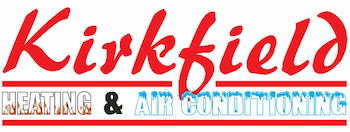Everyone’s always looking to save money on their utility bills, but you should know there’s a way to lower energy use, even when you’re not even home.
It starts with your thermostat. By making the most out of your thermostat, you can help the thermostat plan for your preferred temperatures. You can create a number of automated temperature settings for when you’re home, away or even when you’re sleeping.
With a few simple adjustments, you have more time to enjoy pleasant temperatures while also keeping more of your money. Take a look at a few ways your thermostat doesn’t have to use up all your summer spending money:
While at Home
Whenever you’re at home, you want to enjoy a comfortable temperature. It’s only natural to want your thermostat lower in the summer while you are in the house to appreciate the cool air.
But the most energy-efficient temperatures for the summer is in fact anywhere between 78 and 80 degrees Fahrenheit. This way, you can stay cool while still lowering your monthly energy bill.
While Away
When it comes to setting the temperature for when you are out of the house in summer, it’s extremely common to move the thermostat higher for while they’re gone.
For some homes, you can set the thermostat to higher temperatures like 88 degrees while no one is home before lowering it back to the sweet spot of 78-80 degrees after you return. This way, your air conditioning system isn’t working around the clock to provide cooling for a bunch of empty rooms.
While Asleep
When it comes to sleeping in the summer, you want a nice cool temperature. You should try and keep things between 68-72 degrees Fahrenheit. There’s less risk of getting too hot or too cold at some point overnight.
Other Strategies for Lowering Energy Use:
- Smart thermostat installation: Using a smart thermostat in the summer helps save money on energy costs by automatically adjusting to your lifestyle and home environment. A smart thermostat manages the temperature if you are home or sleeping, while allowing it to warm up when no one is home. With models like the Lennox iComfort, you are able to adjust settings and schedules through your smartphone, tablet or laptop. Requesting smart thermostat installation in your Winnipeg home can be the simplest strategy for maintaining comfortable, yet energy-efficient temperatures no matter where you are.
- Replace current equipment with a newer HVAC system: A new HVAC system is another great option for long-term energy savings. If a system boasts high energy efficiency, your utility bills will be lower because it requires less energy to heat and cool your home. Air conditioning installation in Winnipeg is a great way to beat the heat in the summer.
- Schedule annual AC maintenance: Hiring a skilled professional to perform regular air conditioning maintenance in Winnipeg can have a significant impact on your utility bills. If you stay on top of cleaning key components like the coils, checking for damage and clearing air vents of dust and debris, this can help your HVAC system perform better during day-to-day use.. Increasing efficiency also limits strain on important or delicate components and lowers operational costs, lowering total energy use and eventually the total monthly bill.
- Replace your air filter regularly: Cleaning or replacing the air filter regularly saves money by helping air flow efficiently through your air conditioner. When filters are old and less effective, an AC unit has to work harder, and the added strain may impact the system’s life span and cause breakdowns.
- Check your attic insulation: Insulation is one of the key components in any energy-efficient home, keeping the hot air outside and the cool air inside during the summer. The North American Insulation Manufacturers Association (NAIMA) suggests that homeowners living in southern climates should install at least 13-14 inches of insulation, while colder climates do better with 16-18 inches.
- Review your ventilation: A leak in the air ducts could increase your energy bills much more than 20 percent, plus it can affect equipment such as your water heater, clothes dryer and other appliances to get into the atmosphere of your home. Checking your ductwork for leaks and sealing them can fix both of those problems.
- Seal all other leaky spots in your home: Sealing up other leaks in your home with caulk, foam sealant or weather-stripping helps keep things cooler during those hot summer days. Don’t forget to check for any gaps around windows, doors and even outdoor fixtures. Making time to seal leaks now can help you save a lot over time.




